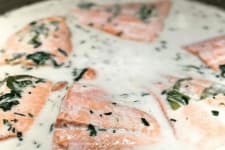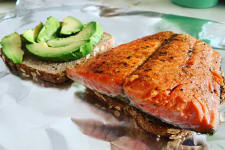It’s not uncommon for people to enjoy salmon that is a little rare in the center, but consumption of any undercooked protein will always carry certain health risks. It’s important for home cooks to understand these risks in order to make informed decisions about how they prepare and enjoy their
While good food safety practices can help to reduce the risk of foodborne illness in salmon that is undercooked, If you’re pregnant or need to consume a low-microbial diet for any other reason, you should never eat underdone salmon. Anytime you eat salmon that is not fully cooked — a similar rule applies to meat, poultry, eggs, and shellfish as well — it opens you up to the risk of contracting a food-borne illness. Eating salmon that is fully cooked is the best way to reduce your risk of food-borne illness.
Can You Eat Undercooked Salmon?
It is never completely safe to eat undercooked salmon. That’s because foodborne illnesses are much more likely to be passed on through salmon that has not been cooked thoroughly to a recommended internal temperature of 145 degrees F.
Bacteria that cause foodborne illness tend to thrive in undercooked temperatures: between 40 degrees F to 140 degrees F. The best way to reduce the risk of foodborne illness is to stick to eating fully cooked salmon.
Is Salmon Better Medium or Well-Done?
When cooking salmon through to 145 degrees F — especially lean, wild salmon — the fish can become tough and dry.
In contrast, wild salmon cooked to a medium-rare doneness (an internal temperature of 120 to 125 degrees F) is flaky and moist. While anything cooked below 145 degrees F is considered underdone in terms of food safety, those in good health may choose to cook salmon to their desired doneness for optimal flavor and texture.
No matter the reason, if you prefer to enjoy salmon cooked to 145 degrees F, some simple fixes may help the fillet stay moist. Keep in mind that wild salmon cook faster than its farmed counterparts, so it’s important to be able to tell when your salmon is done cooking.
Note: Consuming raw or undercooked meats, poultry, seafood, shellfish, or eggs may increase your risk of foodborne illness, especially if you have a certain medical condition. The FDA recommends an internal temperature of 145°F for cooked fish.
Who Shouldn’t Eat Undercooked Salmon?
If you’re pregnant or need to consume a low-microbial diet for any other reason, you should never eat undercooked salmon. Anytime you eat salmon that is not fully cooked — a similar rule applies to meat, poultry, eggs, and shellfish as well — it opens you up to the risk of contracting a food-borne illness. Eating salmon that is fully cooked is the best way to reduce your risk of food-borne illness.
What Happens If You Eat Undercooked Salmon?
There is a risk of getting sick if you happen to eat undercooked salmon. Foodborne illnesses that can be found in undercooked seafood can lead to fever, nausea, vomiting, diarrhea, dehydration, and in more extreme cases, blood infections. These symptoms — what we know more commonly as “food poisoning” — can make an appearance as soon as six hours after eating salmon that has been contaminated with harmful bacteria.
How to Tell When Salmon Is Undercooked
The best way to tell if salmon is undercooked is to use an instant-read thermometer. An accurate reading with a thermometer can help you ensure that your salmon is cooked to a safe temperature. Always be sure to place your thermometer through the middle of the salmon to get an accurate temperature.
Other Ways to Know When Salmon Is Undercooked
-
Watch for albumin: When watching your salmon cook, you can tell it’s almost done cooking when white stuff called albumin starts to collect on top of the salmon. This is completely normal, and a natural indicator that your salmon is nearly ready to eat.
-
Use your eyes: When salmon is undercooked, it will have a dark pink and translucent appearance on the inside. Cooked thoroughly, salmon will be opaque throughout the fillet.
-
Try a fork: A tried-and-true way of testing undercooked salmon is by taking a fork to the fillet and flaking off a bite. If it flakes off easily, your salmon is done cooking. If the salmon is difficult to break off or looks translucent in the middle, your salmon needs more time cooking. If it appears dry and tough, your salmon is overcooked.
Avoiding Eating Undercooked Salmon
While it may be tempting to eat slightly undercooked salmon, it is important to understand the health risks associated with it. You can avoid eating undercooked salmon by cooking it all the way through to 145 degrees F.
The source of your salmon also matters. The freshest, highest quality fish is flash-frozen promptly after harvest to preserve peak freshness and maintain the best taste and texture. Learning about proper salmon thawing and seafood handling can also help in reducing your risk when cooking and eating seafood at home.






